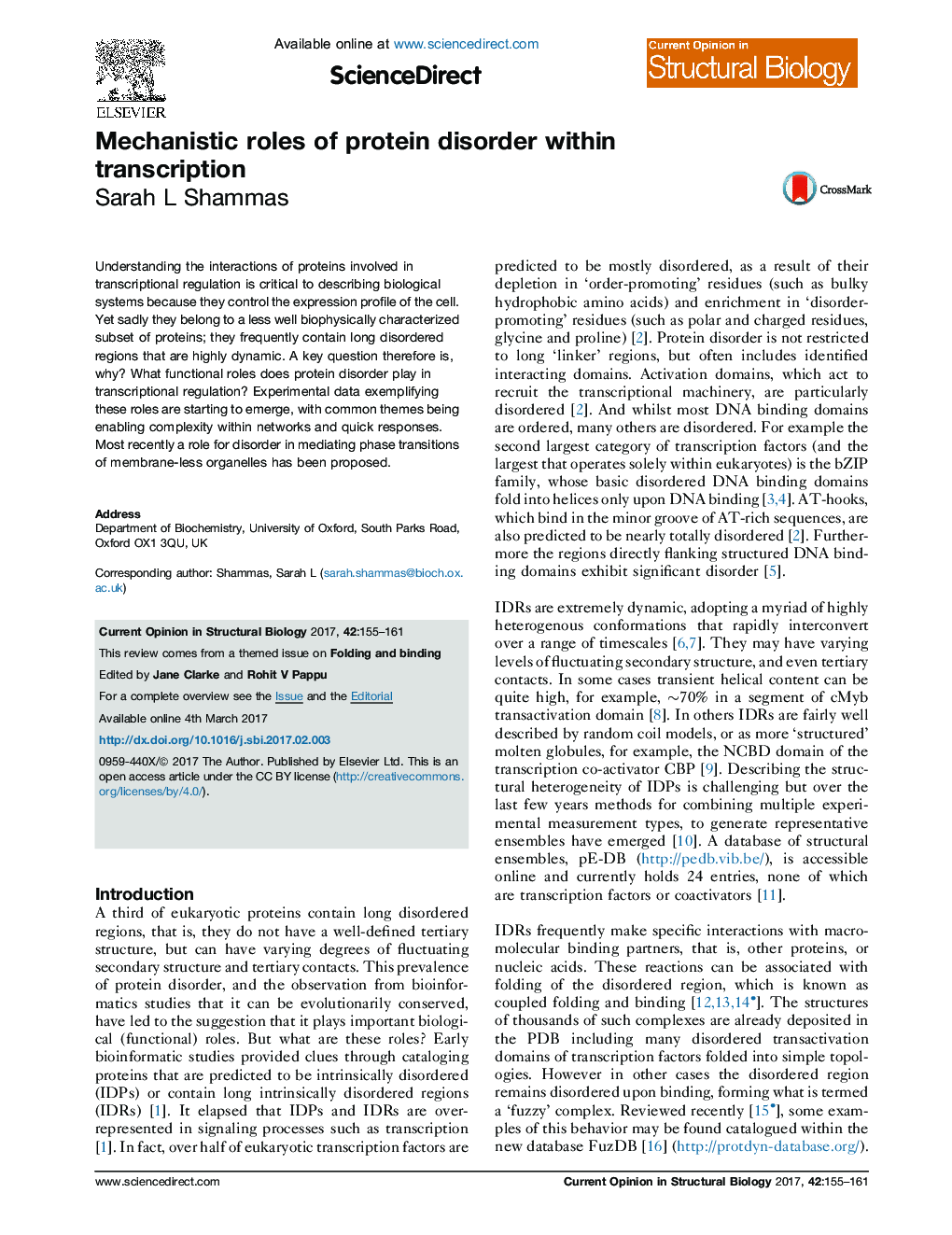| Article ID | Journal | Published Year | Pages | File Type |
|---|---|---|---|---|
| 5510883 | Current Opinion in Structural Biology | 2017 | 7 Pages |
â¢Protein disorder is highly over-represented within transcriptional processes.â¢Protein disorder may accelerate binding, unbinding and/or DNA search processes.â¢Flexible linkers, auto-inhibitory tails and promiscuity enhance network complexity.â¢Post-translational modification and allostery allow context-specific transcription.â¢Nuclear bodies contain low-complexity disordered proteins and nucleic acids.
Understanding the interactions of proteins involved in transcriptional regulation is critical to describing biological systems because they control the expression profile of the cell. Yet sadly they belong to a less well biophysically characterized subset of proteins; they frequently contain long disordered regions that are highly dynamic. A key question therefore is, why? What functional roles does protein disorder play in transcriptional regulation? Experimental data exemplifying these roles are starting to emerge, with common themes being enabling complexity within networks and quick responses. Most recently a role for disorder in mediating phase transitions of membrane-less organelles has been proposed.
Graphical abstractDownload high-res image (159KB)Download full-size image
